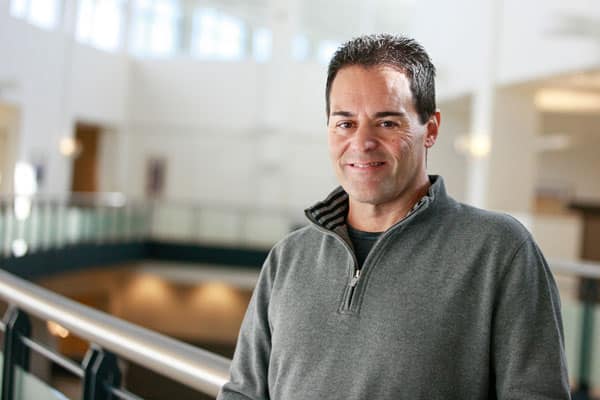In September 2017, as the severe impact of Hurricane Harvey became apparent, the business community rallied to support those who had been displaced or otherwise affected by the storm’s disastrous damage. Global customer-experience company TTEC (formerly known as TeleTech) turned its corporate headquarters into a volunteer contact center for the American Red Cross in just ten days, and it was ultimately contracted by the Federal Emergency Management Agency (FEMA) to establish contact centers in communities that might otherwise have been without a means of supporting aid requests for those in need.
“TTEC is proud to support the humanitarian efforts of the federal government and looks forward to working closely with the affected communities to support those impacted by Hurricane Harvey,” said Martin DeGhetto, chief operating officer for TTEC, in an official statement. “One of the cornerstones of our company’s values is to be of service to those in need, and it is in the DNA of our 48,000 employees across the globe. Everyone in our organization, from the CEO down to the front lines, is committed to doing all we can to support the people in these communities that have been impacted by this disaster.”
As executive director of global real estate and construction, Ken Ziff played an integral role in two projects TTEC took on to help hurricane victims in any way possible. “One of our core values here is ‘Act as One,’” Ziff says. “It was very apparent in these efforts.” Since joining TTEC in March 2017, Ziff has taken on extensive responsibilities at the company—not to mention weathering one of the worst storms on record.

TTEC’s initial response to Hurricane Harvey was to transform its Englewood, Colorado, corporate headquarters into a volunteer contact center in conjunction with the American Red Cross. “We had volunteers from the company stay at the corporate office basically around the clock, even during their time off,” Ziff says.
Turning the headquarters into a contact center presented some challenges. “The corporate offices do not typically house a contact center,” Ziff explains, “but we did have some areas to which we brought in furniture, tables, and chairs, and our IT partners were able to bring phones and computers to support those goals.” The flip took the transition team only two days, and TTEC was able to raise more than $500,000 for relief efforts during the event.
Ziff says that initial volunteer experience was invaluable for TTEC when FEMA hired the company to assist directly in hurricane relief efforts. FEMA tasked TTEC with providing contact centers for areas that were potentially without electricity, let alone communication capabilities. “When you think of the massive destruction, people don’t know where to turn, where to get help, how to contact their relatives, or how to get aid and relief and supplies to all these areas,” Ziff says. “FEMA distributed information and phone numbers, and, ultimately, those numbers led to our contact centers.”
The magnitude of the devastation and the number of people in need created a rather staggering timeframe—10 days—for TTEC to set up and entirely staff two new contact centers. This meant round-the-clock efforts from several of TTEC’s departments, including talent acquisition, facilities, operations, IT, construction, real estate, global project-management services, and workforce management. “Our talent-acquisition team and IT folks did a lot of heavy lifting,” Ziff says. “We had folks on the ground in Texas that Labor Day weekend, working to find locations to get everyone aligned.”

The initial goal was to locate existing customer-experience centers to make use of existing furniture and cabling for a faster turnaround. But finding the sites was only the beginning. The construction team didn’t have enough time to design an ideal footprint, pull the necessary permits for construction, order furniture, or do much rewiring. They were tasked, in essence, with playing constructional jazz. “We did have to bring in some furniture, do some recabling, and drop in some electrical, but no construction was needed,” Ziff says. Then, IT was clear to bring in all the necessary equipment to set up a network and base of operations as well as all the necessary hardware for the new associates to use.
It was then, Ziff says, that the talent-acquisition team really “acted like rockstars.” Each center had 500 seats that needed to be filled with entirely new hires. Because these positions were technically government jobs, the extensive background checks and fingerprinting operations meant that TTEC was hiring faster than its hires could be put to work.
Both sites were ultimately staffed. “This incredible speed with which we were able to set up the contact center was pretty awesome,” Ziff says. “We didn’t have a ton of infrastructure to work with, but we were able to really bring in what we needed to get it done.”
Ziff’s own pride in his contributions to TTEC’s hurricane response, he says, is reflected in those hundreds of jobs he helped provide. “We were able to provide jobs, and they were meaningful jobs because you could see it in their faces,” Ziff says. “Our associates were able to help people—and understand what it takes to help people on the other end of the phone get some relief and get some assistance.”
For those who might be tasked with creating immediate change in just 10 days, Ziff has some advice: form strong alignments with your company, and be a good partner. “Forming those bonds in everyday life and everyday business means so much,” he says.
Photos: Sasa Kadrijevic/Shutterstock.com, Randy Jenkins/TTEC, Foro Consulting, Inc.


